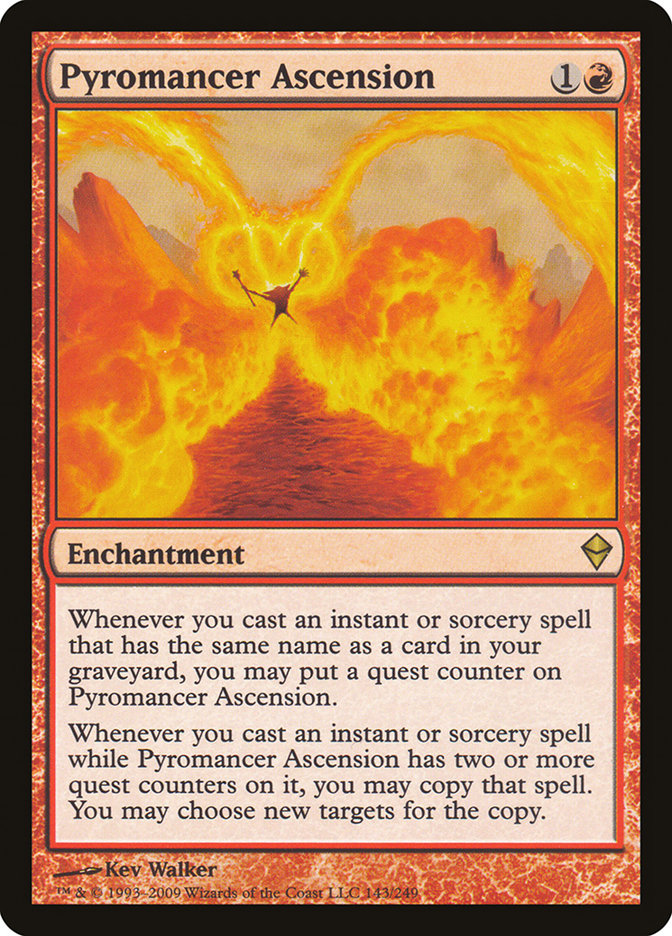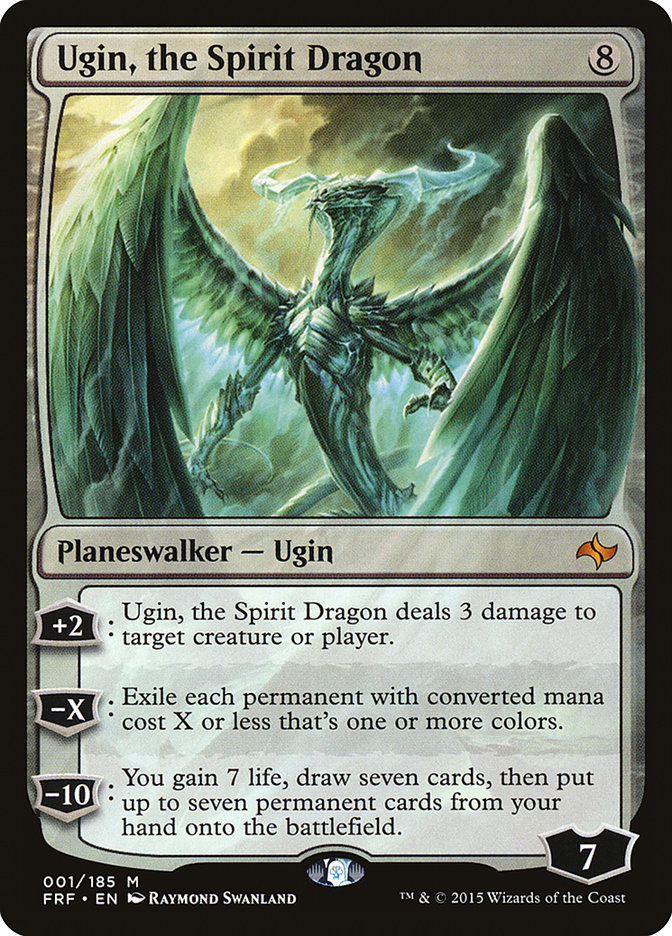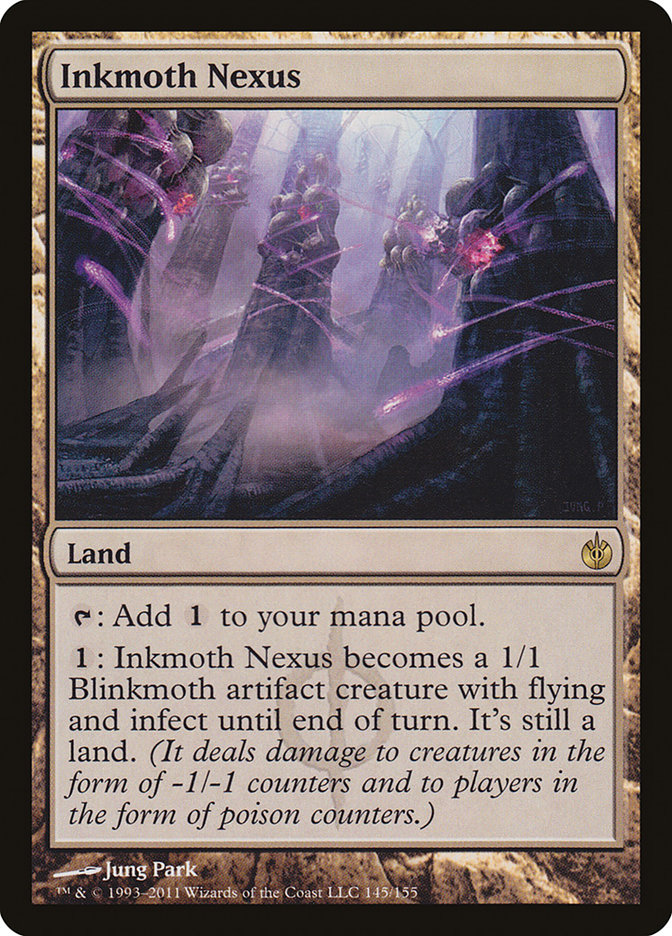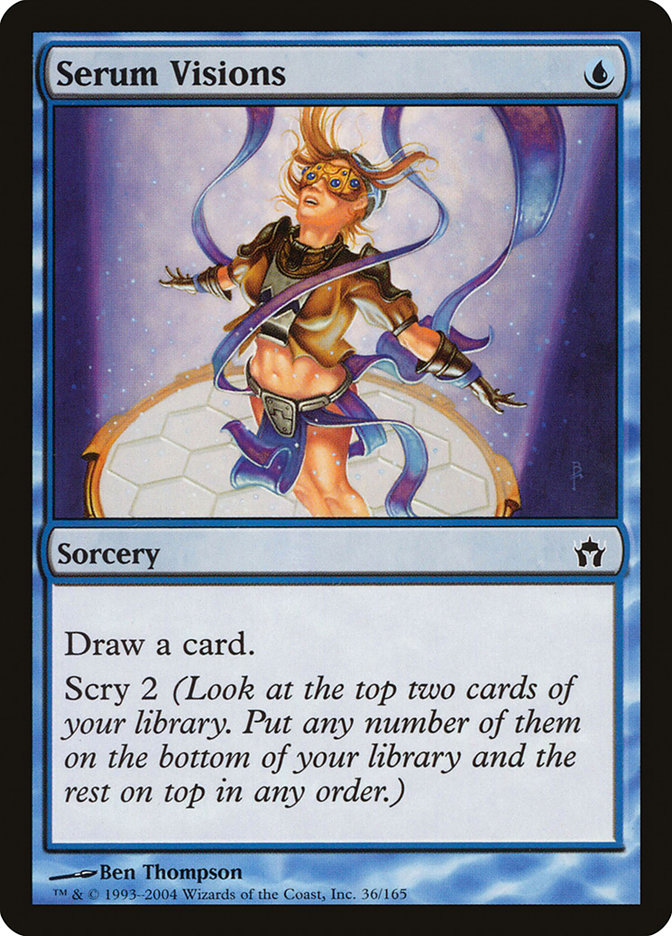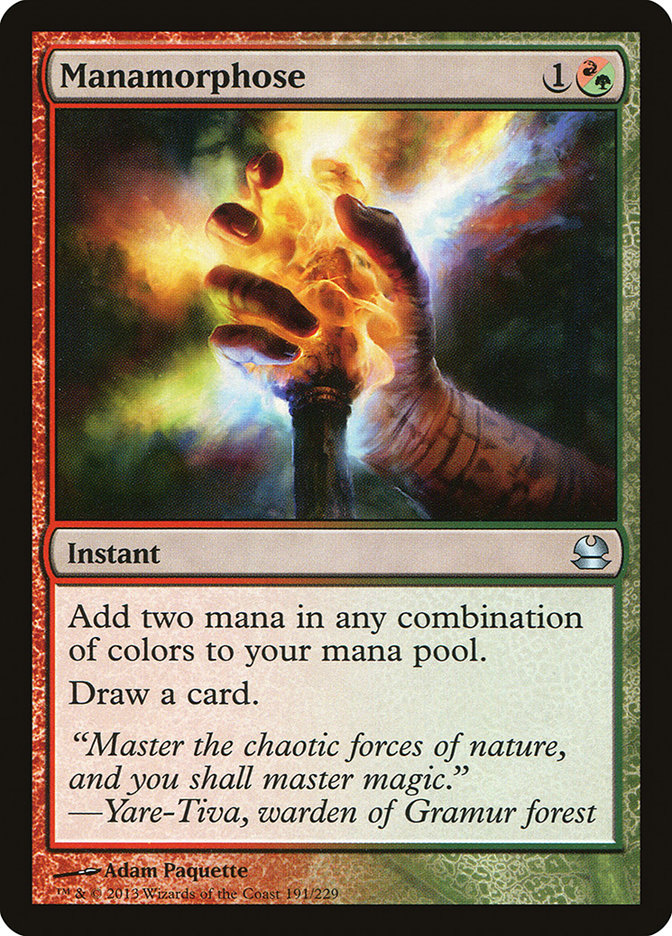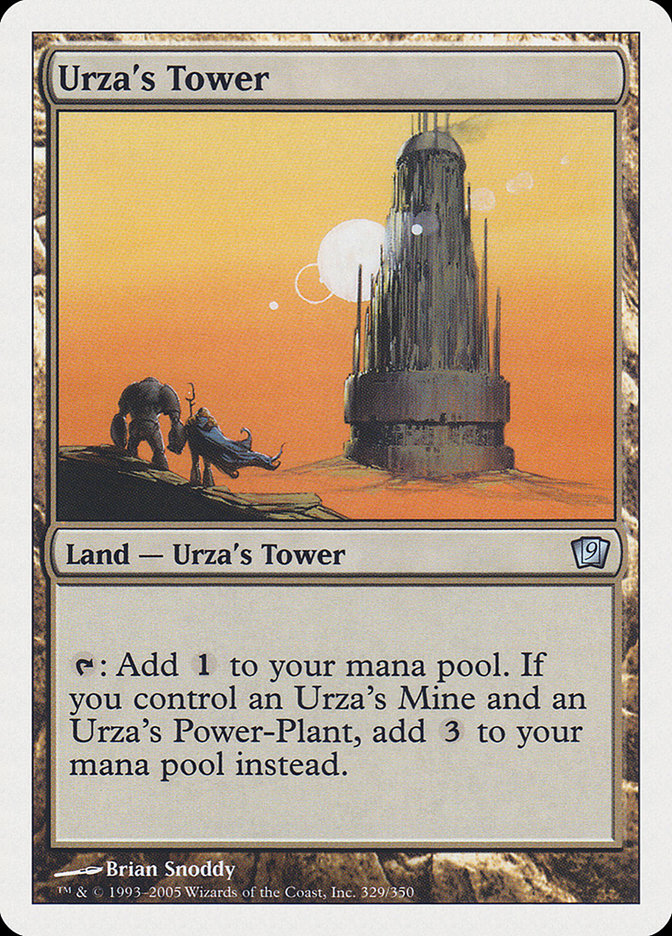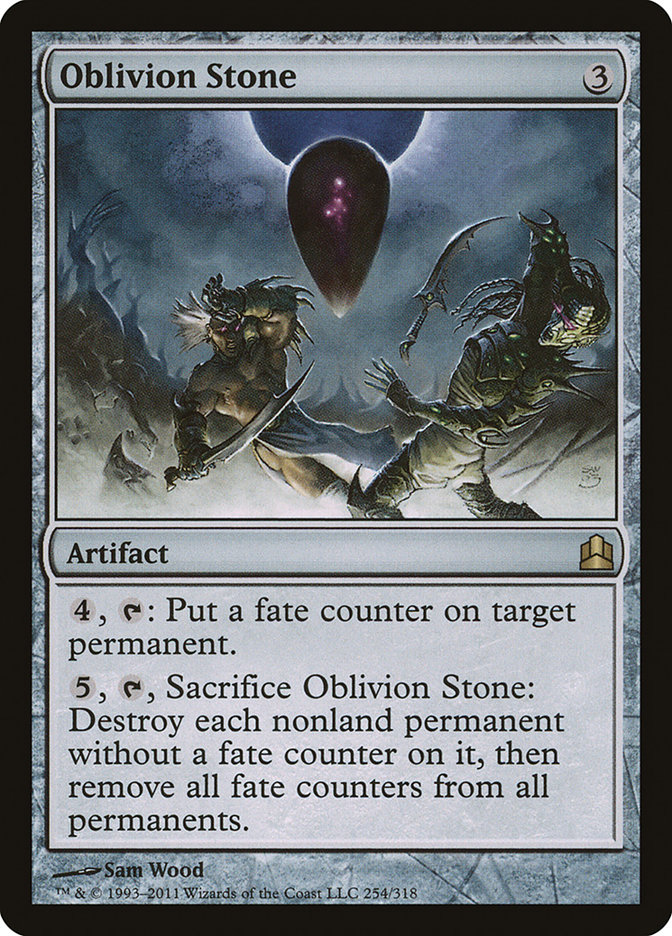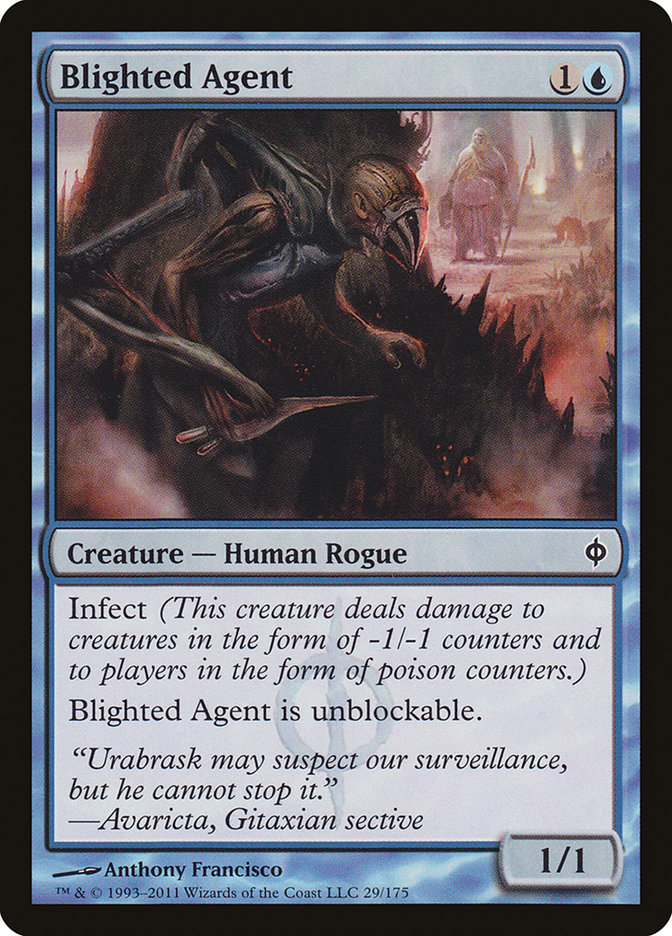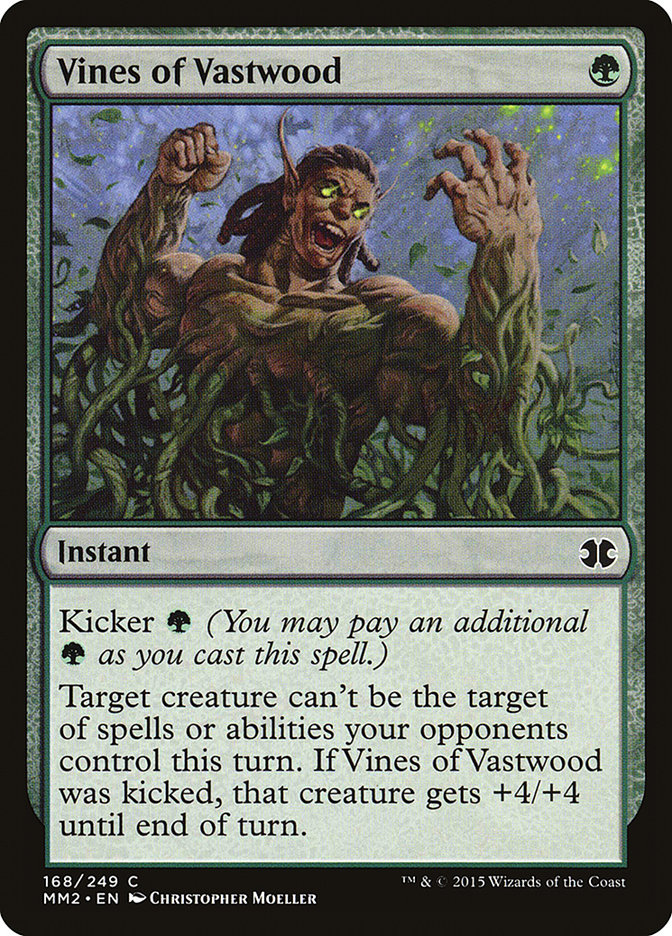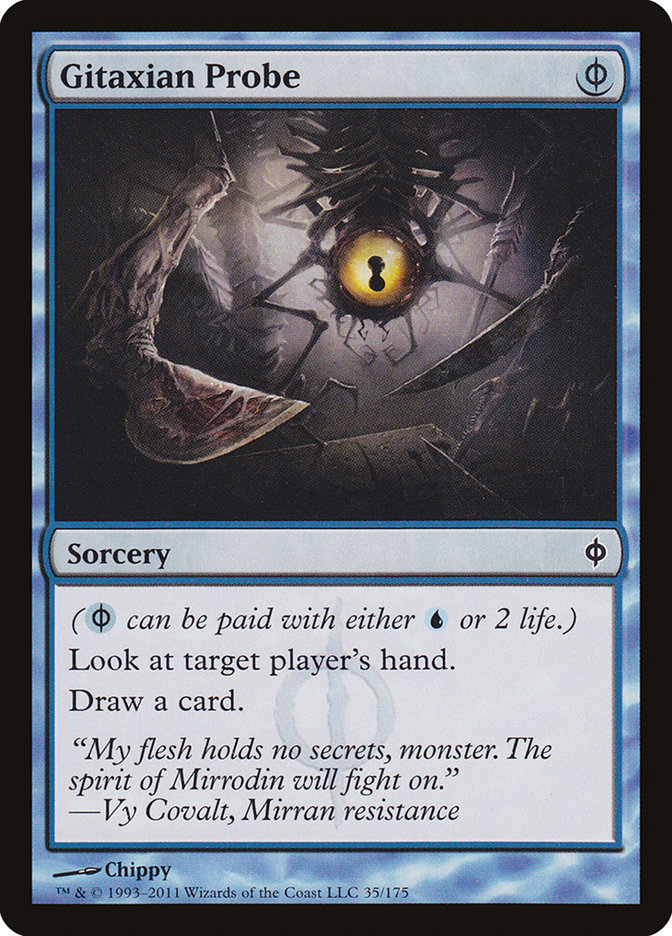There are many lessons to be learned by playing a deck other than your primary one. Recently I set out on a goal to try many of the most powerful and interesting decks in Modern. I wanted to learn how to defeat my opponents better and be able to predict their next play, but I ended up learning much more than that.
One of the biggest benefits I have received from playing these decks is that I am no longer surprised by what my opponent will do. I know how their deck works. I know what they are likely holding up and what spells they have to answer mine. I know their strategy and what they may be hoping to topdeck. I know the lines of play that are going through their head and I know how to beat them more effectively. I’m sure I could read primers and study theory on other decks in the format, but playing them is much more fun and brings new insights I likely would not have found from reading about them.
Learning to Learn
Every deck has its own quirks and unique lines of play. When I first started playing through my gauntlet, I was under the impression that each deck would be relatively easy to learn and pilot well, but that is rarely the case. The surface strategy of an archetype is easy to grasp, but applying it to a new pile of cards in front of you is much more challenging. Each new deck is like playing a different game or solving a brand new puzzle.
You can prepare for a new deck by reading primers, watching videos and streams of people playing it, or talking to someone else who has experience with it. Decks and metagames are ever-changing, but the basic strategy of a deck usually stays the same until rotation or ban list updates.
The more different decks you play, the easier each new one becomes. You get used to thinking along a different axis. Just like learning multiple languages, each one helps you learn the next and everything you have learned can be applied to the next one in some way.
Archetypes and the Metagame Clock
When picking up a new deck, it helps to know what archetype you will be playing. The four main archetypes are Aggro, Combo, Midrange, and Control. Each archetype has a goal and an overarching strategy, so understanding each one can help you jump into a new deck more quickly.
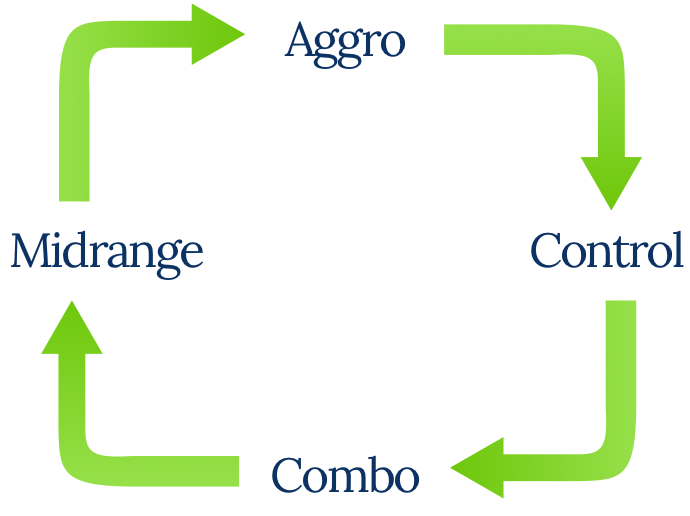
Each archetype has a position on the metagame clock. In general, Aggro beats Control, Control beats Combo, Combo beats Midrange, and Midrange beats Aggro.
Knowing the strengths and weaknesses of each archetype and how they interact helps when you sit down across from an opponent. It helps to identify who’s the beatdown and whether you need to try to shift your strategy around the clock to gain advantage over their deck. If you know the archetype you are playing is weak to your opponent’s, it can influence decisions you make throughout the game.
My Gauntlet
Most people have a preferred archetype or an archetype that they find easiest to play. I have spent a lot of time playing more aggressive decks, so I find similar decks easier to pick up and play. If you know you prefer one archetype, a good goal is to try out the others in your gauntlet.
I have gotten the opportunity to try out four different decks so far in my gauntlet: U/R Storm, Jund, G/R Tron, and U/G Infect.
I plan to try many more on my stream, so keep an eye out for another article like this in the future! For now, here is a breakdown of decks I have played and the lessons I have learned from them.
About Storm
Creatures (4)
Lands (16)
Spells (40)
- 4 Sleight of Hand
- 4 Serum Visions
- 4 Desperate Ritual
- 2 Grapeshot
- 4 Manamorphose
- 4 Pyromancer Ascension
- 4 Pyretic Ritual
- 4 Gitaxian Probe
- 3 Past in Flames
- 3 Desperate Ravings
- 4 Thought Scour
Sideboard

Storm wins games by casting a bunch of cantrips and Rituals, eventually ending in a payoff card with storm like Grapeshot or Empty the Warrens. Cards like Goblin Electromancer allow you to play spells for less mana and Pyromancer Ascension makes copies of each spell you cast, leading to overwhelming advantage. Storm uses cards like Serum Visions and Sleight of Hand to sculpt the top of your library and your hand, setting up for a turn where you can “go off” and win the game.
Storm is a combo deck, and as such, it is weak to control decks but often faster than aggressive decks. If necessary, you can use a Grapeshot to kill opposing creatures to slow down the game, but the primary goal is to ignore your opponent and assemble your combo kill as quickly and efficiently as possible.
Well-timed countermagic that can deny blue mana for the rest of the turn or stop Pyromancer Ascension from resolving can be back-breaking. Storm’s choke point is usually blue mana, so if they can keep you on only red mana, it is much harder to chain through enough spells to put together a win.
Any deck that is slower and has little countermagic or discard is an ideal match for Storm. You are not worried about your life total very much while playing Storm as long as you can go off before you get to zero. Other non-interactive decks become a pure race as to which deck can complete their plan faster; the answer is often Storm.
Lessons Learned
Storm players have to make interesting decisions, including how to organize the top of the library and planning ahead for the next turn or two. Make sure not to spend too many spells getting set up, or you may not be able to collect a high enough storm count to win.
Because Storm sees a huge chunk of its deck each game, it is relatively consistent. You can regularly make enough mana and draw enough cards to just keep going until you hit Grapeshot. While it is possible that the cards are lined up so that you just cannot keep going, it is much less likely to fizzle than I expected.
The order in which you cast cantrips is much more important than I expected. Planning ahead and leaving the proper amount of each color of mana requires a deep understanding of the deck. Most of the time, keeping roughly equal numbers of each color will work, but sometimes you need to be very stringent with your use of blue mana, lest you run out.
It also helped to spend some time goldfishing with Storm. Many decks do not work very well without an opponent, but since Storm is not very interactive, it’s valuable practice. Going through the motions of playing your cards in the right order and learning when to spend mana of what color allows you to play much faster in your next match.
Playing Storm has helped me to look ahead to future turns better in every deck. I was forced to plan what turn I would try to win and to sculpt my hand accordingly. I would think about the statistics of my deck, what cards are still in there, and the probabilities of drawing certain cards. No matter what deck you’re piloting, you can get an edge by thinking this way.
About Jund
Creatures (13)
Planeswalkers (4)
Lands (24)
Spells (19)

Jund’s goal is to answer every card their opponent plays one-for-one. It is designed to answer every threat their opponent can cast and to discard cards it couldn’t otherwise answer. With the best cards in the opponent’s deck neutralized, Jund’s remaining cards are simply better. If a game goes long, Jund is probably favored.
Jund is the quintessential example of a midrange deck. It will grind you out while gaining card advantage with Dark Confidant and Liliana of the Veil. Even your life total is a resource, and Jund proves it’s not afraid to use it. What the manabase, Dark Confidant, and Thoughtseize take away is earned back with Scavenging Ooze, Kitchen Finks, and Kalitas, Traitor of Ghet.
One of Jund’s greatest strengths is the ability to shift between aggro, midrange, and control when necessary. With clever sideboarding and good draws, you can switch up your game plan to “one-up” your opponent’s position on the metagame clock.
Lessons Learned
The first big obstacle to playing Jund is its three-color manabase. Learning to sequence your land drops and fetchlands is a challenge, and managing your life total can be difficult with the painful manabase if you have never played a three-color Modern deck.
The most important and unique decisions that Jund players have to make revolve around Thoughtseize and Inquisition of Kozilek. Learning the right card to take in each situation based on the interaction you have in your hand and your opponent’s mana curve can be a challenge.
Another important lesson is how to sequence your removal spells. Sequencing multiple removal spells and deciding between two good options is more subtle than you might expect it to be. Knowledge of the threats in your opponent’s deck can help you make these decisions.
As somebody who usually goes toward synergistic, aggressive decks, I’ve enjoyed Jund more than I thought I might. Between its flexibility and the sheer power level of the cards in the deck, I’ve had a ton of fun playing the deck. In fact, it’s the next deck I’m building in paper—I’m in it for the long haul!
About Tron
Creatures (8)
Planeswalkers (6)
Lands (19)
Spells (27)
- 4 Lightning Bolt
- 3 Oblivion Stone
- 4 Sylvan Scrying
- 4 Chromatic Sphere
- 4 Chromatic Star
- 4 Expedition Map
- 4 Ancient Stirrings
Sideboard

Tron is a Control deck that feels like a Combo deck with a Midrange finish. Its goal is to assemble the “Urzatron” (Urza’s Mine, Urza’s Tower, and Urza’s Power Plant, together stronger like Voltron) and power out large colorless threats early in the game.
It looks like the deck wins with huge haymakers like Wurmcoil Engine, but concessions are more common than you might think. It’s a great feeling when you empty your opponent’s hand and remove every single permanent on your opponent’s battlefield. There’s no coming back from that!
Tron is unique in that it shifts on the metagame clock after assembling the Urzatron instead of as a reaction to the opponent’s strategy. It plays the control role while looking like a combo deck during the early turns. Cards like Pyroclasm, Firespout, and Oblivion Stone are many-for-one answers that can delay the game until it reaches the next stage. Once it has control of the battlefield and far too much mana, it becomes a midrange deck. Its threats are inherent two-for-ones or better and often double as answers.
Tron plays for the long game and is arguably the best deck in Modern if you get to the late-game. It goes over the top of pretty much any other deck. Its threats are hard to kill and it has plenty of ways to chain through the deck to find more. However, Tron struggles with fast decks, creature-lands, and decks that don’t rely on creatures on the battlefield to win.
Lessons Learned
More than many other Modern decks, Tron relies on good mulligan decisions. Before you ever say “keep,” you have to plan out your first few turns. This is a great skill that can help you play pretty much any deck, but it’s easy to skip unless you’re playing a deck that, like Tron, punishes you for bad mulligan decisions.
Like Storm, sequencing your cantrips and tutors is important, as is thinking about statistics. While it’s fun to say you “always had it” when you find your last Tron piece, it actually takes more effort to efficiently assemble Tron than it might seem on the surface.
I also learned how and when to “sandbag,” or hold back cards you could otherwise play. Imagine your opponent has a Tectonic Edge and you have Urza’s Tower, Urza’s Mine, and a tapped Grove of the Burnwillows, with an Ugin, the Spirit Dragon and Urza’s Power Plant in hand. It is probably correct to hold the Power Plant until next turn, when you can use it to deploy Ugin before it gets destroyed. This skill has helped me when I’m playing Aggro decks, as sandbagging threats against Control can often give you the long-term resources you need to win.
About Infect
Creatures (14)
Lands (20)
Spells (26)

The goal of Infect is to win the game with ten points of poison combat damage dealt by creatures with infect. By cutting the amount of damage you have to deal in half, pump spells do double duty. You attack on a different axis from what most people are prepared for—Kitchen Finks won’t help against this kind of aggression.
Infect lies somewhere between Aggro and Combo on the metagame clock. It attacks very quickly for a lot of damage but plays more like a protect-the-queen Combo deck. If you were a fan of decks running Become Immense and Temur Battle Rage or the U/W Heroic decks in previous Standard formats, you’ll probably enjoy Infect.
Infect is fast, so slower decks with little in the way of removal struggle to stop it. Turn 3 and 4 kills are common with an Infect deck if your opponent has no interaction, so beware of those Lightning Bolts! Because Infect relies so heavily on one creature to get much damage in, any deck with lots of cheap removal is very difficult to beat. An onslaught of Gut Shots, Slaughter Pacts, and Path to Exile would be brutal, because Infect only has so many protection spells.
Lessons Learned
Infect puts the importance of playing around removal spells into clear focus. Gitaxian Probe is there to help you in Infect, but what you learn about protecting your creatures is extremely valuable no matter what deck you’re playing.
It was also a great lesson about combat tricks. You use a combination of mind games, the threat of activation, passing priority, and knowing when you have to go for it or when you can wait. Knowing how to exploit these situations and avoid blowouts can be great in multiple Constructed formats and in Limited.
Try It Yourself
If you are interested in playing other decks and running your own gauntlet, there are many ways you can do so. If a friend or acquaintance from your local gaming store has a deck you would like to try, see if they will let you borrow it for an event. Maybe you can just play a few games where you play each other’s decks.
There is also the option of trading cards or buying a new deck to play, but that requires a further level of commitment. I would recommend testing a deck out before investing in it. You can’t play with playtest cards and things of that nature in any tournaments, but you can use them with a friend at home to find out if you like a deck before obtaining cards for it.
Recently Magic Online has started running gauntlet tournaments. They began with the Modern Pro Tour Gauntlet in February. Since then they have had gauntlets for Standard and Legacy, too. These are wonderful ways to try out a new format. You are given a randomly selected deck from a list of top decks. You then play a three-round swiss tournament with it against others in the gauntlet. Next time you see a gauntlet available on Magic Online, I highly recommend trying it.
Learn With Me
If you are interested in helping me along my journey through Modern decks, I would love your help! I will be playing a new deck after #SCGDFW. If you would like to vote for the next deck for me to play you can do so here. Feel free to hang out with me and run the Modern gauntlet with me!
I encourage you all to try a new deck this week. Let me know in the comments how it goes! Have fun, learn something new, and improve at Magic along the way.
And as always, happy gaming!


